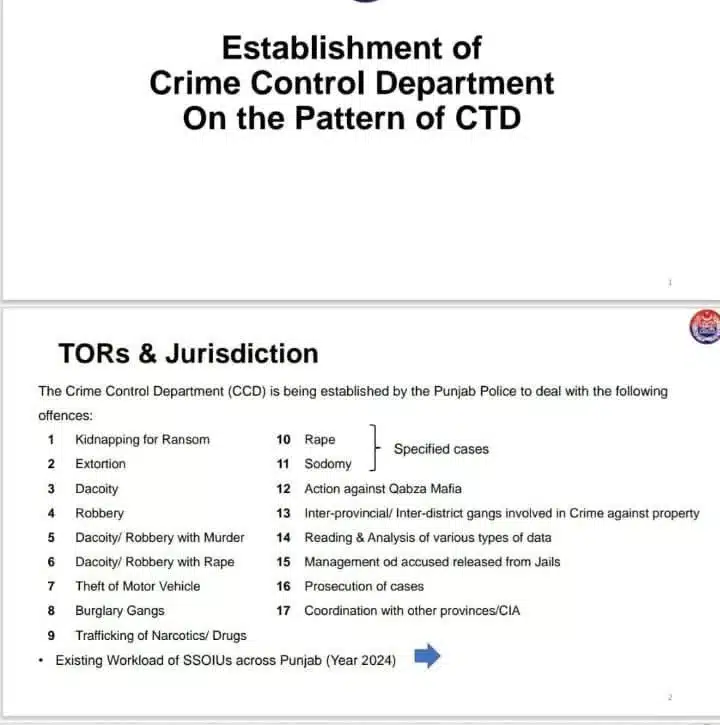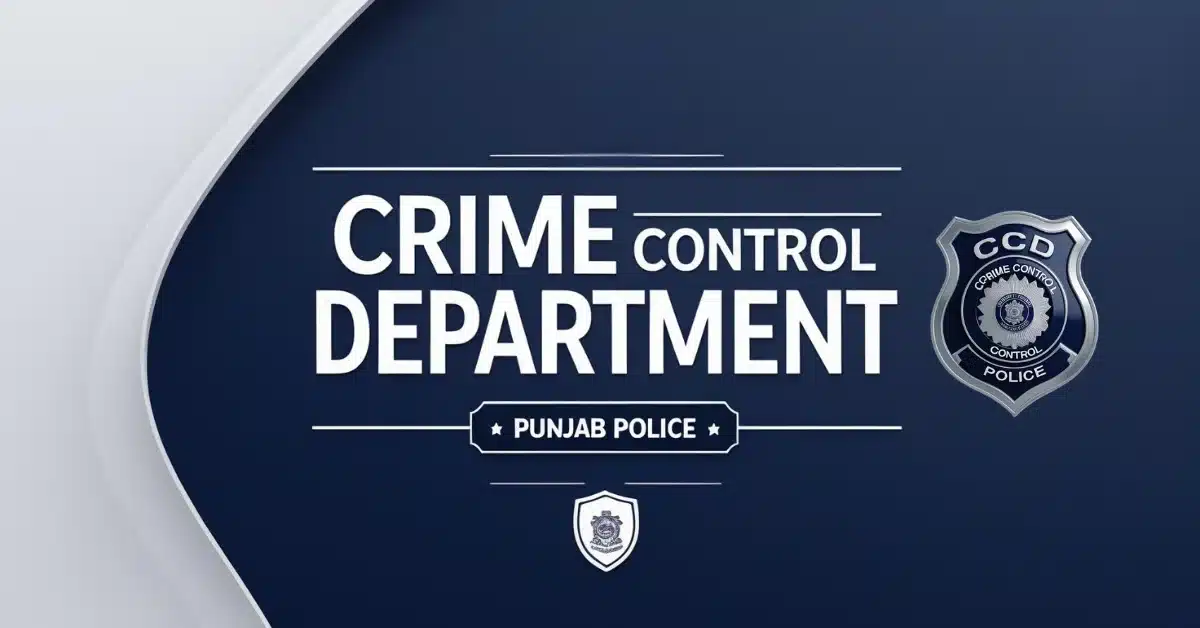In a major announcement, the Punjab Police on Wednesday added a new unit to their portfolio of structure as they announced the establishment of a specialized force, the Crime Control Department (CCD), on a model similar to the widely acclaimed Counter Terrorism Department (CTD) This development is part of a strategy to strengthen law enforcement efforts against serious crime throughout the province.
Crime Control Department Key Highlights
- Specialized department focusing on 17 critical crime categories
- Province-wide jurisdiction with inter-provincial coordination
- Data-driven approach to crime control
- Integration with existing law enforcement infrastructure
Organizational Structure and Mandate of Crime Control Department

Core Purpose
Punjab Police had increased its investigative capacity significantly with the addition of the Crime Control Department for tackling organized crime and serious criminal activities. With its formation, the department’s creation marks an upgraded method of policing, one that focuses on data-based analysis and cooperation between agencies.
Also Read: What is Corporal in Punjab Police? Everything You Need To Know
Jurisdictional Framework
The department’s authority extends across the following key areas:
Violent Crime Division
- Kidnapping for Ransom
- Dacoity/Robbery with Murder
- Sexual Assault Cases (Specified)
- Armed Robbery
Organized Crime Unit
- Qabza Mafia Operations
- Inter-provincial Criminal Networks
- Narcotics Trafficking
- Burglary Gang Operations
Property Crime Section
- Vehicle Theft
- Extortion
- Robbery
- Dacoity
Administrative Operations
- Data Analysis and Intelligence
- Jail Release Management
- Case Prosecution
- Inter-provincial Coordination
Operational Strategy
Data-Driven Approach
The CCD emphasizes modern law enforcement techniques through:
- Comprehensive data analysis
- Pattern recognition
- Intelligence gathering
- Cross-jurisdictional information sharing
Also Read: What is SPU in Punjab Police? Everything You Need to Know
Inter-Agency Collaboration
The department maintains strong coordination with:
- Other provincial law enforcement agencies
- Crime Investigation Agency (CIA)
- Local police units
- Prison authorities
Expected Impact
Crime Prevention
- Enhanced capability to prevent organized criminal activities
- Improved response to serious crimes
- Better management of released offenders
- Strengthened inter-provincial crime control
Law Enforcement Enhancement
- Specialized handling of serious crimes
- Improved data analysis capabilities
- Streamlined prosecution processes
- Enhanced coordination mechanisms
Future Outlook
The establishment of the Crime Control Department represents a significant step forward in Punjab’s law enforcement policies. The inclusion of data-driven techniques alongside crime control specialism positions the CCD to make a major impact on provincial security matters.
- Reduce organized crime rates
- Improve investigation success rates
- Enhance public safety
- Strengthen inter-provincial law enforcement coordination
Conclusion
The establishment of the Crime Control Department represents a significant step forward in Punjabi law enforcement policies. The inclusion of data-driven techniques alongside crime control specialism positions the CCD to make a major impact on provincial security matters.
Frequently Asked Questions (FAQs)
1. The CCD exhibits which attributes separate it from other police departments?
The CCD operates by specializing in serious organized crime through data analysis and creating inter-provincial crime investigation coordination systems.
2. What functions does the CCD provide to the existing police departments across different jurisdictions?
The department delivers detailed specialized knowledge and stays connected to other criminal agencies for complete crime management control.
3. How does the CCD’s approach differ from traditional policing?
The department implements data-based analysis while pursuing specialist investigations with coordinated efforts between law enforcement groups for finely tuned crime management.
4. What types of crimes fall under CCD jurisdiction?
The department assumes responsibility for handling 17 different types of serious offenses, which encompass kidnapping activities, organized crime operations, and inter-provincial criminal activities.




